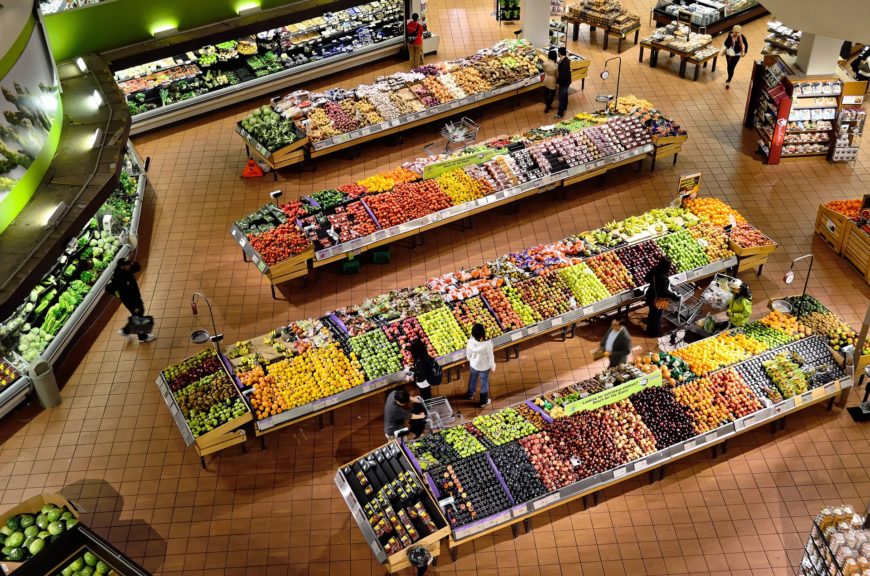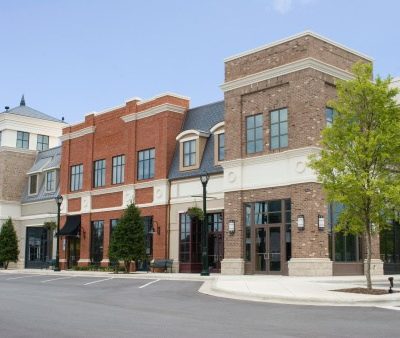How The “Retail Apocalypse” Is Changing Grocery Stores

The process of how we purchase food is evolving at a rampant pace. Over the past several years, Amazon, Walmart, and other front-running influencers have brought home delivery, literally, to the market’s doorsteps. However, smaller grocery models, unable to keep up with industry giants, have been forced to “wait and see”, while large grocery enterprises continue to delve into a new food frontier. Full of click and convenience features for shoppers, chain grocers have proceeded with a “business as usual” mentality, relying on the traditional brick and mortar consumer shopping habits to sustain their operations amid the digital delivery surge.
U.S. Grocers Need To Adjust Models And Services
Unfortunately, the hesitation to embrace seismic shifts within the industry has proven costly for many U.S. grocers. Initially, these food retailers watched cautiously as large distributors tested new delivery and service channels. However, fervent changes in consumer demand and expectations have required regional grocers to reevaluate and adjust their offerings to remain competitive in today’s current turbulent marketplace.
In this new landscape, consumer convenience is paramount. While online transactions only account for 3% of U.S. grocery sales, that number is expected to increase as it catches up with other world markets, such as France at 5% and the U.K. at 9%. Additionally, in 2016, reports showed that, for the first time, Americans spent more at bars and restaurants ($54.857 billion) than they did on groceries ($52.503). As these smaller retailers adapt to the new normal, they recognize that they aren’t just trying to keep pace with Amazon–they are also trying to reclaim consumers from a recent wave of specialized start-ups that enter the market using an agile business model designed to succeed in this new food frontier.
New Grocer Food Services Trends
As traditional grocery stores adjust their current resources and practices, several new trends, both within the industry and well as within the commercial real estate space, are emerging. Smaller grocers looking to realign their services as well as the physical presence of their brand are evolving in several key ways, including:
Taking Advantage of Empty Big Box Spaces
Savvy grocery stores are capitalizing on the changing face of retail and the abundant vacancies found throughout U.S. shopping malls. In an effort to expand capabilities and overall square footage, many grocers are replacing anchor store spaces in malls and plazas. Whole Foods recently set up shop in a former Florida Sears space. Kroger Co. took over a commercial real estate space that once housed a Macy’s in Ohio. And, in Massachusetts, Wegmans Food Markets moved into a two-level 146,500 square foot store in what was once the Natick Mall’s JC Penny; the property’s unique design and multi-level layout have allowed the supermarket chain to expand its services, offering, and product lines.
Acquiring Real Estate Debt Free
Operator-owned grocers are hardly revolutionaries with names including Walmart, Aldi, and Kroger, but these companies often borrow heavily. We’ve recently seen grocers on the list of retailers floundering to stay afloat in the market filing bankruptcy and downsizing, including Winn Dixie in the Southeast Market. Publix Supermarkets, conversely, is expanding and evolving its brand by strategically purchasing its store real estate as well as shopping centers all cash. This is part of its $1.5 billion initiative to expand its brand and remodel existing stores. Publix’s strategy allows the regional grocer to not only generate rental income from tenants, but also manage its mix of co-tenants, cut occupancy costs, and manage the customer’s overall property experience.
Expanding The Food Shopping Experience
Beyond broadening food-shopping services, many grocers are also testing new ways to enhance consumers’ overall food-shopping experience. Leveraging the trend of Americans preferring to eat out rather than cook in, grocery stores are including various amenities with their standardized aisles and checkout lines to transform their facility into more of an extended social hub for shoppers. In smaller cities, some stores are testing locations that merge purchasing provisions with a multitude of entertainment experiences as well as basic convenience services, such an in-store laundromat. Beyond extending its brick and mortar presence, Publix has plans to go digital with its services, offering online cooking classes to further connect with buyers. The supermarket brand already hosts Aprons, its in-person cooking school at some of its locations as a way for friends and couples to enjoy a fun night out making a wide range of dishes. The online classes provide yet another way to keep Publix brand planted firmly on consumers’ radars and expanding the overall consumer experience as it works to edge out other brands and services.
Grocery Kiosks
To compete with Amazon’s ever-imposing presence in the market, some grocery stores will also explore launching freestanding kiosks that plants their brands and wares directly onto shoppers’ visual radars. Installed in various commercial properties, kiosks can be used in large office buildings, train stations, or other high traffic locations, enabling a passerby to quickly place orders that can be picked up later in the day for optimized shopper convenience.
What grocery trends are you seeing emerge in your market? Let us know in the comments below!










